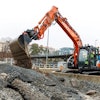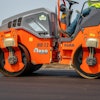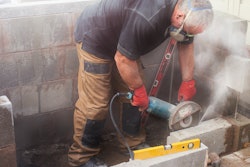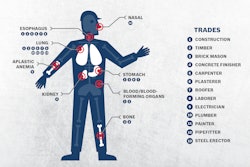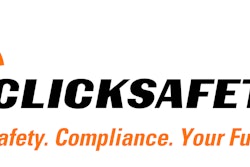In late March, the Occupational Safety and Health Administration (OSHA) issued its final rule on silica dust exposure. The goal of the new rule is to curb lung cancer, silicosis, chronic obstructive pulmonary disease and kidney disease in America's workers by limiting their exposure to respirable crystalline silica. The rule is comprised of two standards, one for construction and one for general industry and maritime.
There are several key provisions in the final rule:
- Reduces the permissible exposure limit (PEL) for respirable crystalline silica to 50 micrograms per cubic meter of air, averaged over an 8-hour shift (previous limit was 250 micrograms).
- Requires employers to use engineering controls (such as water or ventilation) to limit worker exposure to the PEL, provide respirators when engineering controls cannot adequately limit exposure, limit worker access to high exposure areas, develop a written exposure-control plan, offer medical exams to highly exposed workers, and train workers on silica risks and how to limit exposures.
- Provides medical exams to monitor highly exposed workers and gives them information about their lung health.
- Provides flexibility to help employers — especially small businesses — protect workers from silica exposure.
Compliance schedule
Both standards contained in the final rule take effect on June 23, 2016. The construction industry (e.g., milling operations) must comply with the final rule by June 2017 and June 2018 for general industry (e.g., at an asphalt mix facility).
OSHA estimates that the rule will save over 600 lives and prevent more than 900 new cases of silicosis each year, once its effects are fully realized. The final rule is projected to provide net benefits of about $7.7 billion annually.
About 2.3 million workers are exposed to respirable crystalline silica in their workplaces, including 2 million construction workers who drill, cut, crush, or grind silica-containing materials such as concrete and stone.
“The new rule will substantially reduce the permissible exposure limit, setting it at 50 micrograms per cubic meter of air – that’s half the current limit for general industry and five times more stringent than the current exposure limit for construction,” U.S. Secretary of Labor Thomas E. Perez wrote in his blog post. “In most cases, this can be achieved using common-sense controls – like wetting down the dust or improving ventilation – to limit exposure.”
Most employers can limit harmful dust exposure by using equipment that is widely available — generally using water spray systems to keep dust from getting into the air or a ventilation system to remove it from the air. The rule provides greater compliance assistance to construction employers by including a table of specified controls they can follow to be in compliance.
What this means to you
According to Howard Marks, vice president for Environment, Health & Safety with NAPA, his association and industry members continue to review the final rule to fully understand any and all potential impacts for the asphalt pavement industry.
“After reviewing the final rule, it appears OSHA acknowledged the information we brought forward during the rulemaking process, demonstrating that the agency’s initial requirements for respiratory protection during asphalt pavement milling operations were unnecessary,” says Marks.
NAPA worked for more than a decade with its members, labor, milling machine manufacturers, academia, and government to devise engineering controls that would control silica dust emissions during milling operations.
“Through their hard work, the Asphalt/Silica Milling Machine Partnership developed efficient solutions to this potential hazard, and we are pleased that OSHA recognized the effectiveness of these engineering controls by specifying their use in the standard,” says Marks. “Many newer existing milling machines already have these controls in place, and manufacturers have pledged to have them on all half-lane and larger mills starting in January 2017. In addition, retrofits will be made available for older model milling machines.”
Although there will be costs in complying with the rule, NAPA believes the asphalt milling machine industry is well positioned to meet the new OSHA silica standard by its effective date and that the enhanced engineering controls developed through the Asphalt/Silica Milling Machine Partnership will protect those working on or near these large milling machines, says Marks.
“NAPA recently issued interim guidance for the industry (see sidebar) but we continue to review the rule as it relates to other asphalt pavement mix production and construction activities, and we expect to provide our members with additional guidance in the near future,” he says.
“The rule does allow employers flexibility in meeting the standard, and it doesn’t necessarily require respiratory protection or even engineering controls so long as an employee does not exceed the PEL,” Marks says. “NAPA is currently reviewing employee exposure across a variety of job tasks and activities to see where the industry needs to focus its resources and actions.”
Visit OSHA's silica rule webpage at osha.gov/silica/ for factsheets, answers to frequently asked questions, and to sign up for email updates on compliance dates and resources.


